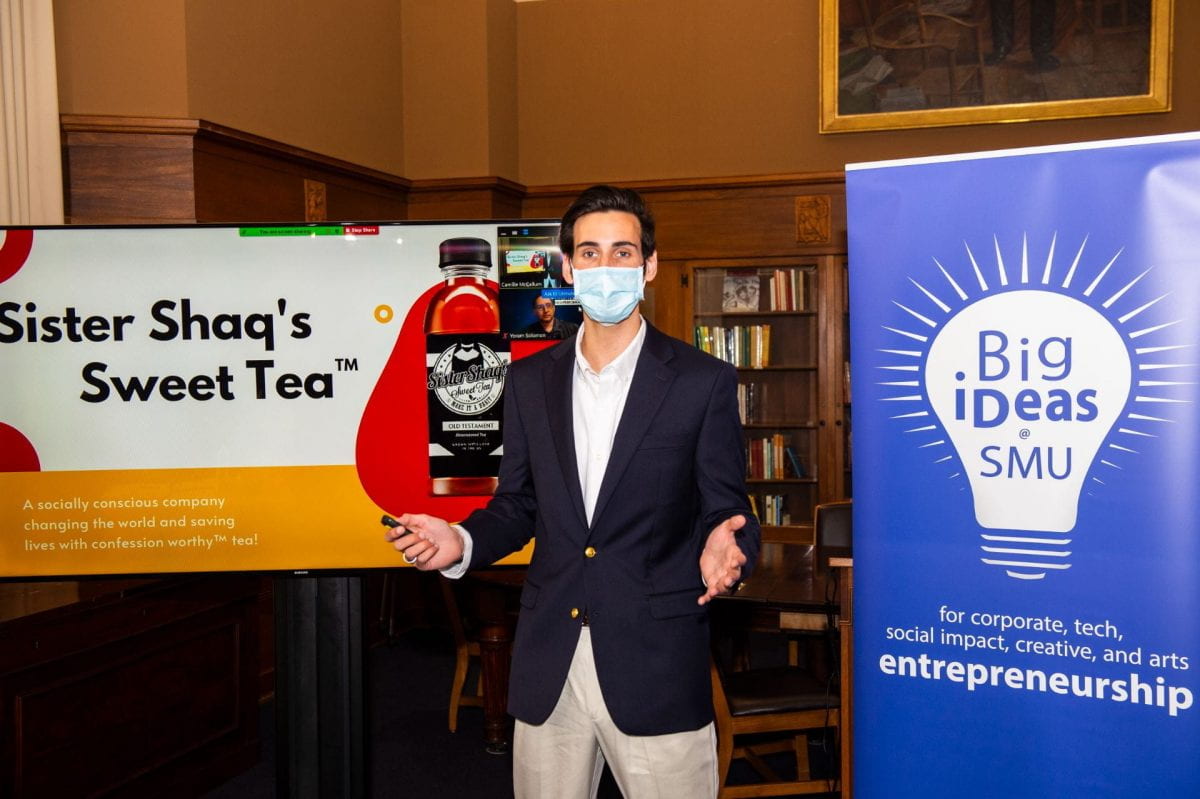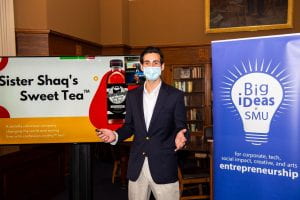Abigail Hays is a senior in the Four-Plus-One program working toward a master’s in mechanical engineering with an emphasis on fluid and thermal sciences.
INITIATING THE PROJECT:
The project in which Hays partakes had already been set up by a master’s student and built upon when she became involved. Hays’ interest in adding her own twist to the project was sparked by her passion in the various scientific fields, and the associated concepts. She was eager to begin applying what she was learning in her classes!
MENTORS
One of Hays’ professors, Dr. Paul Krueger, oversees the lab and the several experimental and confrontational-based projects it is composed of. Hays is involved in the fluid sciences project. Dr. Krueger’s experience in vortex formation allows him to help Hays review all of her data and steer her in the right direction.
Hays has also been working with post-doctoral researcher and adjunct professor, Dr. Matt Saari, who taught her how to code and run various equipment, two concepts she had not yet learned in school. In addition, Dr. Saari also taught Hays how to present her work in a group setting.
SUMMER RESEARCH INTENSIVE
The Summer 2021 Research Institute allowed Hays to narrow her focus to her specific project. By immersing herself in the intensive workshops, she acquired skills she is not typically taught in school. For example, she learned how to present and write a research thesis, put together a research paper, and conduct research on previous research and then create a literature review over it.
Hays found the program to be insightful for her master’s degree because she could turn the acquired information into her master’s thesis. Though it was more research-specific and not so much engineering-based, Hays was able to apply what she learned throughout the institute to her research project.
THE FLAPPING FIN PROJECT
Hays’ project consists of two parts:
Part 1
This past summer (2021), the team worked to get thrust in the small-scale proportion system in a lower Reynold’s number range, which is difficult to achieve because it has primarily been higher. They successfully obtained thrust and are now transitioning into the second part of the project.
Part 2
The team is currently working to narrow the ranges to two conditions and compare it to a fin with different surface boundary conditions. The varied conditions on the fin serve to decrease the friction with the water. The less friction there is, the less drag there is, and the less drag there is, the more thrust there will be.
TRIAL AND ERROR
In part one of their research, the team successfully obtained thrust in their data. What this basically means is that they were able to see the artificial fin flap like that of a fish, while submerged under water. In attempt to replicate how a fish moves, they observed some thrust. The challenge was that the team was operating at a lower range than Reynold’s number, which is the successful range for thrust to occur, as demonstrated by numerous previous research. Because water acts differently, it was difficult to figure out how to get thrust in a non-thrust condition.
Additionally, because of how time-demanding the experiment has been, equipment has worn down. For example, the team’s tunnel collapsed, thus spilling water everywhere and extending the damage to other equipment. The team also struggled to find glue that worked for the fin underwater because water’s properties do not favor those of glue. Furthermore, water’s characteristics, including its evaporative properties, made it difficult to maintain repetition.
CURRENT POINT IN THE PROJECT
Hays is currently collecting and analyzing data of two different systems: One fin with a lower friction boundary condition, and one without. The team is currently setting up the system and collecting data over vertices that were formed by the movement of the fin.
ADVICE FOR THOSE INTERESTED IN RESEARCH
If you are interested in research, do not be afraid to pursue it. People who are considering research often feel overwhelmed by the technical terms, but there are mentors and various resources available to guide you through it. If you complete a course and find that you loved it, pursue something in that area! Do not let that ambition go to waste.
Thank you, Abigail Hays!






 [Dallas, Texas July 2021] —
[Dallas, Texas July 2021] — 
 Raleigh Dewan is a junior at SMU double majoring in Creative Writing and Marketing with a concentration in Entrepreneurship and minors in Italian, History, and Public Policy and International Affairs. At SMU, Raleigh is a Hunt Leadership Scholar, BBA Scholar, Hilltop Scholar, Pre-Law Scholar, Hegi Career Leader, and a member of the University Honors Program. On the hilltop, Raleigh serves as the Internal Development Chair of Program Council, a member of the Campus Services Student Advisory Board, and is President of the Engaged Learning Student Board.
Raleigh Dewan is a junior at SMU double majoring in Creative Writing and Marketing with a concentration in Entrepreneurship and minors in Italian, History, and Public Policy and International Affairs. At SMU, Raleigh is a Hunt Leadership Scholar, BBA Scholar, Hilltop Scholar, Pre-Law Scholar, Hegi Career Leader, and a member of the University Honors Program. On the hilltop, Raleigh serves as the Internal Development Chair of Program Council, a member of the Campus Services Student Advisory Board, and is President of the Engaged Learning Student Board.